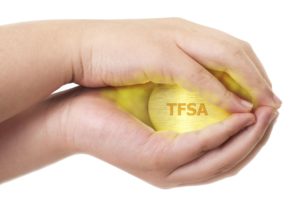In Canada, while many tax credits and benefits are available based on family income, a graduated tax bracket system applies to the individual when taxing income. This is the case even for married or common-law partners (CLPs) where each spouse is taxed on income based on his/her own set of graduated tax brackets and rates. Where family members can split taxable income for income tax purposes, it can result in less tax payable for the family.
To protect tax revenues, there are attribution rules in place that prevent the simplest forms of income-splitting. However, despite these rules, there are a number of legitimate ways to split income within a family. One such strategy is the splitting of “eligible pension income.” Where a taxpayer receives eligible pension income, he/she can split up to 50% of this income with a spouse or CLP. Many senior couples benefit from this strategy as they are the most likely to receive this type of income.
For more information on these rules, see the following from the Canada Revenue Agency (CRA):
https://www.canada.ca/en/revenue-agency/services/tax/ individuals/topics/pension-income-splitting.html.
While much has been written about the ability to split eligible pension income for years prior to death, some have wondered about the ability to split this income in the year of death. More specifically, if an individual dies in the year, can eligible income received before death be split? Does the month in which death occurs impact the amount that can be split? And, what about amounts deemed received as a consequence of death? Would these amounts be eligible to be split? Consider the following scenario:
Arash died in July at the age of 74. Prior to death, for the period from January to July of the year of death, Arash received $14,000 in periodic pension payments and $7,000 of RRIF income. He also received $9,200 in combined OAS and CPP payments. At the time of death, Arash’s assets included a RRIF valued at $300,000 (as per the RRIF contract, his spouse, Tara, was named beneficiary) and a principal residence jointly owned with his spouse.
In preparing Arash’s terminal tax return, the executor, wondered if Arash’s eligible pension income for the year of death could be split with Tara.
For the year of death, for eligible amounts received before death, the federal Income Tax Act permits the executor of a deceased pensioner to split eligible pension income with a surviving spouse or CLP. Where this is the case, assuming no breakdown in the relationship prior to death, the amount eligible to be split – the “split-pension amount” – is calculated the same as it is for years prior to death. In the above example, Arash’s eligible pension income received before death totaled $21,000 ($14,000 of RPP and $7,000 of RRIF income).
But, what about amounts deemed received at death? Recall that Arash had a RRIF at the time of death valued at $300,000. Tara was listed named beneficiary on the plan contract. Under the ITA, RRSPs and RRIFs are deemed withdrawn just prior to death, meaning, in the absence of a tax-deferred rollover to a qualifying survivor, the amount deemed withdrawn in the year of death is taxable. Can any portion of this date-of-death amount be split between Arash and Tara?
As per CRA technical interpretation #2012-0453151C6, because an amount deemed received at death is not “a payment out of a RRIF,” these amounts do not qualify as eligible pension income for purposes of the pension income-splitting rules. However, depending on the circumstances (i.e., who will receive the proceeds), there may be other ways to split this income.
Because Tara is a “qualifying survivor” (which includes a spouse, CLP or financially dependent child), Tara can request for Arash’s RRIF to be transferred to her RRSP or RRIF on a rollover basis. Alternatively, if the goal is to make use of graduated tax rates for both Arash and Tara for the year of Bobby’s death, Tara can request a cash payment (all or part) from Arash’s RRIF, which, as per CRA guidelines, would produce a T4RIF slip issued to Arash.
If the beneficiary of the RRIF is someone other than a qualifying survivor (spouse, CLP or financially dependent child), there is no opportunity to split the date-of-death amount; this amount would not qualify as eligible pension income, and the deemed withdrawal at death would be taxed to the deceased without an option to tax this amount to anyone else.
Understanding income-splitting rules can bring relief to families, even at death when circumstances are otherwise difficult to deal with.




